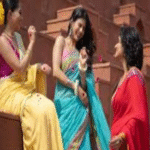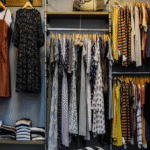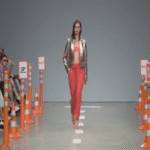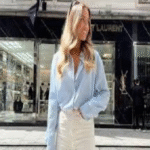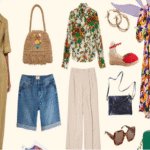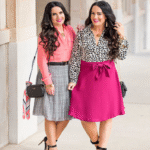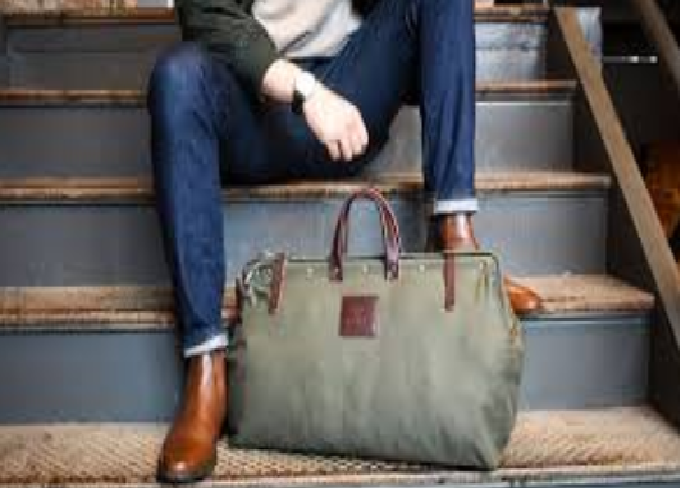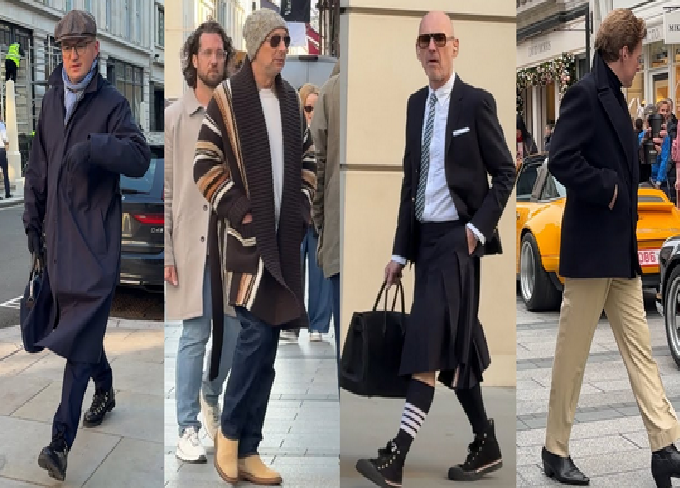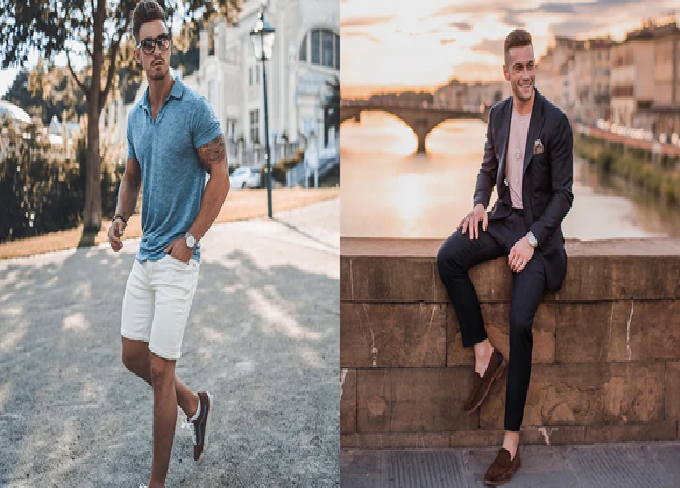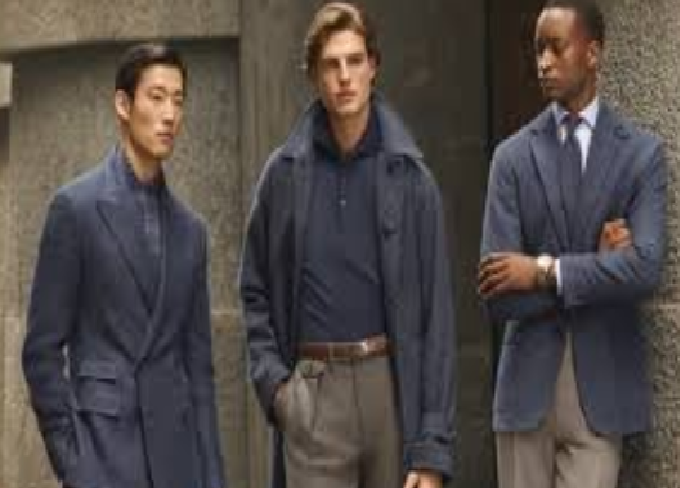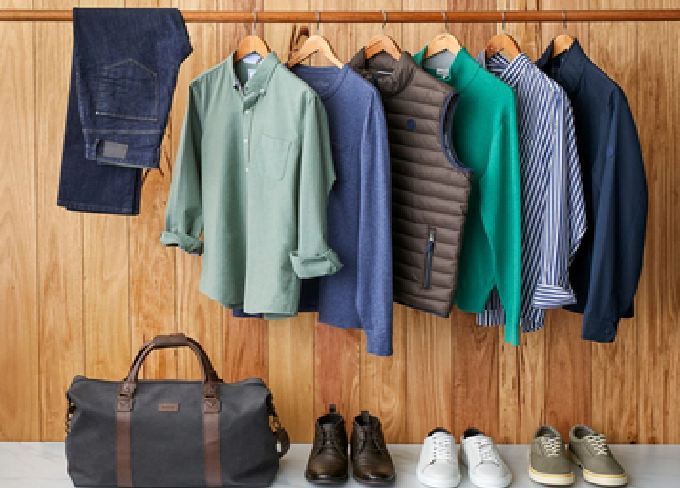Accessories are the quiet workhorses of style. They don’t shout — they whisper. The right watch strap, the right belt, a well-chosen pair of sunglasses: these small decisions pull an outfit together and make a man look intentional rather than accidental. This article breaks down the essential men’s accessories every guy should know about, how to choose them, and how to use them to lift everyday looks from “fine” to “memorable.”
Why accessories matter
Clothing is the canvas; accessories are the frame. While a great jacket or a clean pair of jeans sets the baseline, accessories add personality, polish, and practicality. They can:
-
Create balance and proportion.
-
Add color, texture, or sheen to a plain outfit.
-
Signal attention to detail and personal taste.
-
Turn the same outfit into multiple looks with just a swap.
Think of accessories as modular: swap a leather strap for a NATO strap, or add a pocket square, and you’ve sent a different message — casual vs refined, modern vs vintage, playful vs serious.
1. The watch: more than timekeeping
A watch is the single most powerful accessory a man can own. It’s visible, practical, and symbolic of competence.
Types to consider
-
Dress watch — thin, minimal dial, leather strap. Perfect with shirts and suits.
-
Field watch — rugged, legible, military-inspired. Great for casual looks.
-
Diver — bold, rotating bezel, water resistant. A sporty everyday choice.
-
Chronograph — functional subdials; adds visual interest.
-
Smartwatch — tech-forward, fits active lifestyles.
How to choose
-
Match the watch’s formality to your wardrobe: leather and slim for dressy; metal bracelets and bulkier cases for casual.
-
Case diameter: 36–40mm for classic looks; 40–44mm for modern/bold wrists.
-
Strap material: leather for elegance, metal for durability, fabric/NATO for casual versatility.
Styling tips
-
For business, choose a simple, thin watch with a leather strap.
-
For weekend outfits, a NATO or rubber strap instantly relaxes the vibe.
-
Avoid flashy oversized logos; subtlety reads as confidence.
2. Belts: functional ties that finish outfits
A belt’s job is practical, but its finishing power is aesthetic. It ties the top and bottom halves of your outfit together.
Must-haves
-
Black leather belt — dress shoes and suits.
-
Brown leather belt — versatile for chinos, jeans, and boots.
-
Casual woven or fabric belt — summer and weekend wear.
How to pair
-
Match belt color to shoe color for formal outfits.
-
Width matters: 1–1.25” for dress; up to 1.5” for casual.
-
Buckle style: simple polished metal for dress; brushed or matte for casual.
Care
-
Condition leather belts occasionally to prevent cracking.
-
Rotate belts to extend lifespan.
3. Shoes: accessories that anchor an outfit
While shoes are garments, they function like accessories because they can change the character of an outfit entirely.
Core styles
-
Oxford / Balmoral — classic formal shoe.
-
Derby / Blucher — slightly more casual but still refined.
-
Loafers — smart-casual and summer-friendly.
-
Chelsea boots / chukkas — great for smarter-casual and colder months.
-
Clean sneakers — essential for modern casual looks.
Styling tips
-
Keep a pair of clean white sneakers for laid-back city looks.
-
Leather shoes should be polished and well-cared for — scuffed shoes read sloppy.
-
For color coordination: dark brown with navy, black with charcoal/black; tan with beige/olive.
4. Sunglasses: frame your face
Sunglasses protect your eyes — but they also frame your face and add instant cool.
Find your shape
-
Round face: angular frames (wayfarer, square) add structure.
-
Square face: round or oval frames soften angles.
-
Oval face: most frame shapes work.
-
Heart-shaped: aviators or frames that balance the forehead.
Lens and frame choices
-
Polarized lenses reduce glare — useful for driving and water activities.
-
Metal frames read classic or aviator; acetate/Thick frames read modern or retro.
-
Stick to frame sizes proportional to your face.
Styling
-
Choose frames that complement your overall aesthetic — sleek for minimalists, classic aviators for rugged looks.
-
Keep a neutral-colored pair for everyday use and maybe a bolder pair for statement-making occasions.
5. Neckwear: ties, bow ties, and scarves
Neckwear shapes the neckline and communicates formality and personality.
Ties
-
Keep a solid, textured tie in navy or burgundy for versatility.
-
Patterns (stripes, small dots) can add interest but keep scale appropriate to suit patterns.
-
Tie length: tip should hit your belt buckle.
Scarves
-
Wool scarves for winter, lightweight linen/cotton for transitional months.
-
Stick to muted patterns for formal settings; bold patterns for casual looks.
Bow ties
-
Best for formal events or when you want to inject character. Keep one self-tie and one pre-tied for convenience.
6. Bags: function meets style
A good bag is both practical and a statement of lifestyle.
Common types
-
Briefcase / leather messenger — professional, structured.
-
Backpack (leather or nylon) — practical for commuting; choose a sleek silhouette for a refined look.
-
Weekender / duffel — for travel; leather or waxed canvas adds character.
-
Crossbody / sling — minimalist carry for essentials.
Choosing one
-
Consider size relative to your daily carry (laptop, documents, gym kit).
-
Neutral colors (black, tan, navy) increase versatility.
-
Hardware quality matters: zippers, buckles, and seams should be solid.
7. Wallets and card holders
A slim wallet or card holder keeps pockets neat and helps avoid bulging silhouettes.
Options
-
Bifold leather wallet — classic, but can become bulky.
-
Cardholder / slim wallet — minimalist; ideal for daily carry.
-
Money clip — for those who carry cash sparingly.
Materials
-
Full-grain leather ages well and looks better over time.
-
Synthetic options are lighter and sometimes more durable in wet conditions.
8. Socks and hosiery: small but noticeable
Socks are a subtle place to show taste or color — but they must be worn intentionally.
Rules of thumb
-
Match socks to trousers rather than shoes for a continuous leg line.
-
Dress socks: thin, longer length, in muted tones or tasteful patterns.
-
Casual socks: thicker, patterned, or in color to show personality with rolled cuffs or cropped trousers.
Specialty options
-
No-show socks for loafers and summer sneakers.
-
Wool or merino blends for temperature control and odor resistance.
9. Hats: style with purpose
Hats can protect from sun and weather while giving definition to an outfit.
Useful hat types
-
Baseball cap — casual, sporty.
-
Fedora / trilby — classic, dressier if worn well.
-
Beanie — winter staple; keep it fitted.
-
Bucket hat — trendy and casual; works for relaxed looks.
Styling caution
-
Hats must fit your head proportionally. Too large or small looks off.
-
Keep hats clean and de-pilled; store them properly to maintain shape.
10. Pocket squares and lapel pins
Pocket squares add flair to blazers and suits; lapel pins are tiny accents that can carry meaning or style.
Pocket squares
-
Silk for shine; linen or cotton for texture.
-
Fold simply for modern looks (straight or puff fold).
-
Coordinate with tie but do not match exactly — complement rather than clone.
Lapel pins
-
Keep them small and tasteful — a tiny flower, metal pin, or enamel flag.
-
One is enough. Avoid over-accessorizing the lapel area.
11. Jewelry: subtle and selective
Men’s jewelry should be minimal and chosen intentionally.
Pieces to consider
-
A simple bracelet — leather or metal; balance with a watch.
-
Ring(s) — wedding band, signet ring, or a simple band.
-
Neck chain — thin, short chain can be worn under a shirt or visible depending on style.
Guidelines
-
Keep finishes consistent: if your watch is silver-toned, match metal jewelry.
-
Avoid over-layering; less is more.
12. Grooming tools as accessories
A well-groomed appearance amplifies any accessory. Think of grooming tools as part of your accessory kit.
Essentials
-
Quality comb or brush.
-
Travel-size cologne or deodorant.
-
Pocket mirror, nail clippers, and a small lint roller.
-
A neat beard kit if you wear facial hair.
13. Color, texture and proportion — the three rules
When combining accessories, consider color, texture, and proportion.
Color
-
Use a limited palette: anchor with neutrals, add one pop color.
-
Metals: match belt buckle, watch case, and shoe hardware when possible.
Texture
-
Mix textures for depth: knit tie with a wool blazer; leather watch strap with cotton shirts.
Proportion
-
Avoid tiny accessories with oversized garments — scale matters.
-
If your outfit is minimalist, a single bold accessory can be the focal point.
14. Building a capsule accessory wardrobe
You don’t need everything at once. Build slowly with quality in mind.
Starter capsule
-
One versatile watch (or two: dress and sport).
-
Black and brown leather belts.
-
One pair of clean white sneakers and one pair of leather dress shoes or boots.
-
Sunglasses that suit your face.
-
Slim wallet or cardholder.
-
A functional bag for work and a weekender for travel.
-
A neutral scarf and a beanie for colder months.
-
One or two ties and a pocket square for occasional formal events.
Invest gradually
-
Prioritize items you’ll wear often: shoes, belts, watch.
-
Buy neutral, timeless pieces first; add statement items later.
15. Maintenance: keep accessories looking sharp
Accessories age with you — but they require care.
Leather
-
Clean and condition leather belts, shoes, and bags every few months.
-
Use shoe trees to maintain shape and absorb moisture.
Metal
-
Wipe watches and jewelry with a soft cloth regularly.
-
For metal bracelets, a gentle brush and mild soap (and drying) keeps them bright.
Textiles
-
Wash scarves and hats per care instructions.
-
Store sunglasses in a case to avoid scratches.
16. Do’s and don’ts — quick checklist
Do:
-
Invest in a few quality essentials.
-
Keep accessories coordinated but not matched too literally.
-
Think about function as well as form.
-
Let a single accessory be the focal point if the rest of the outfit is simple.
Don’t:
-
Over-accessorize — more than two statement pieces looks cluttered.
-
Mix too many metal finishes at once.
-
Wear worn-out shoes or cracked leather; replacement is cheaper than the style cost.
-
Neglect scale — tiny sunglasses with a large face or huge watch on a slim wrist looks off.
Closing: accessories as silent signatures
Accessories are how you sign your daily look. They’re where fashion meets personality and practicality. Start with the essentials — a reliable watch, clean shoes, a good belt, sunglasses, and a sensible bag — then refine with smaller accents: a pocket square here, a bracelet there. Over time you’ll develop a shorthand: little cues that tell people who you are without a single word. That’s the power of accessories — they make your style feel deliberate, capable, and unmistakably you.
